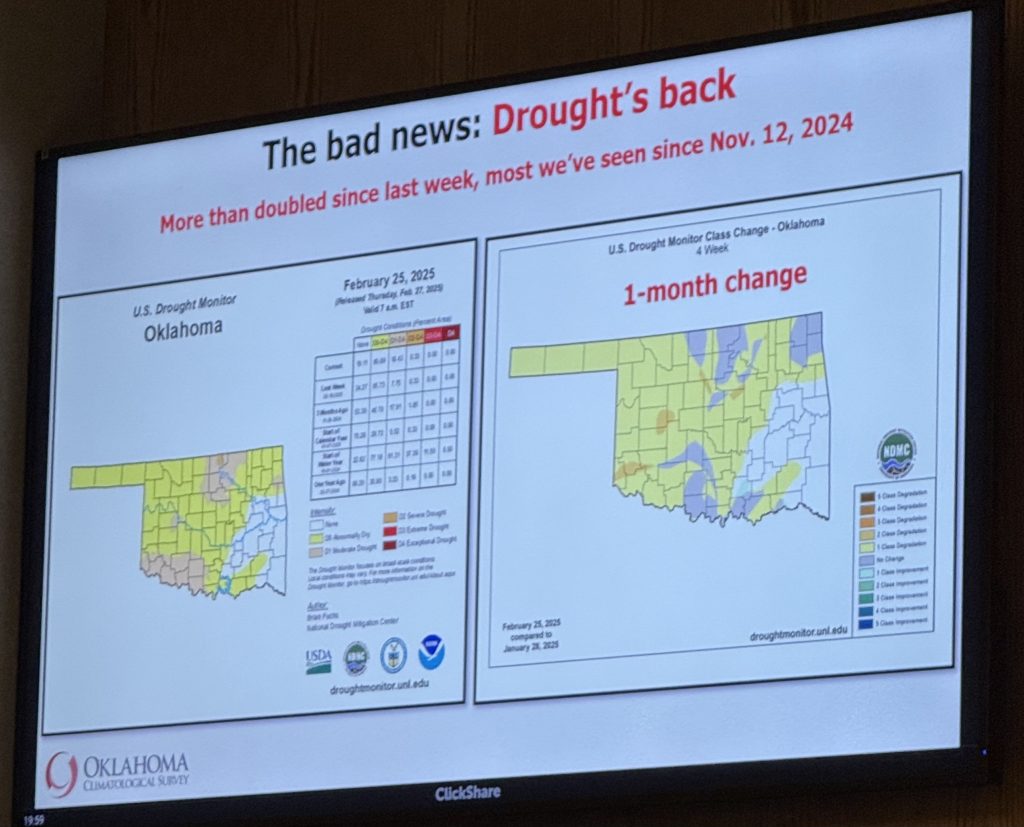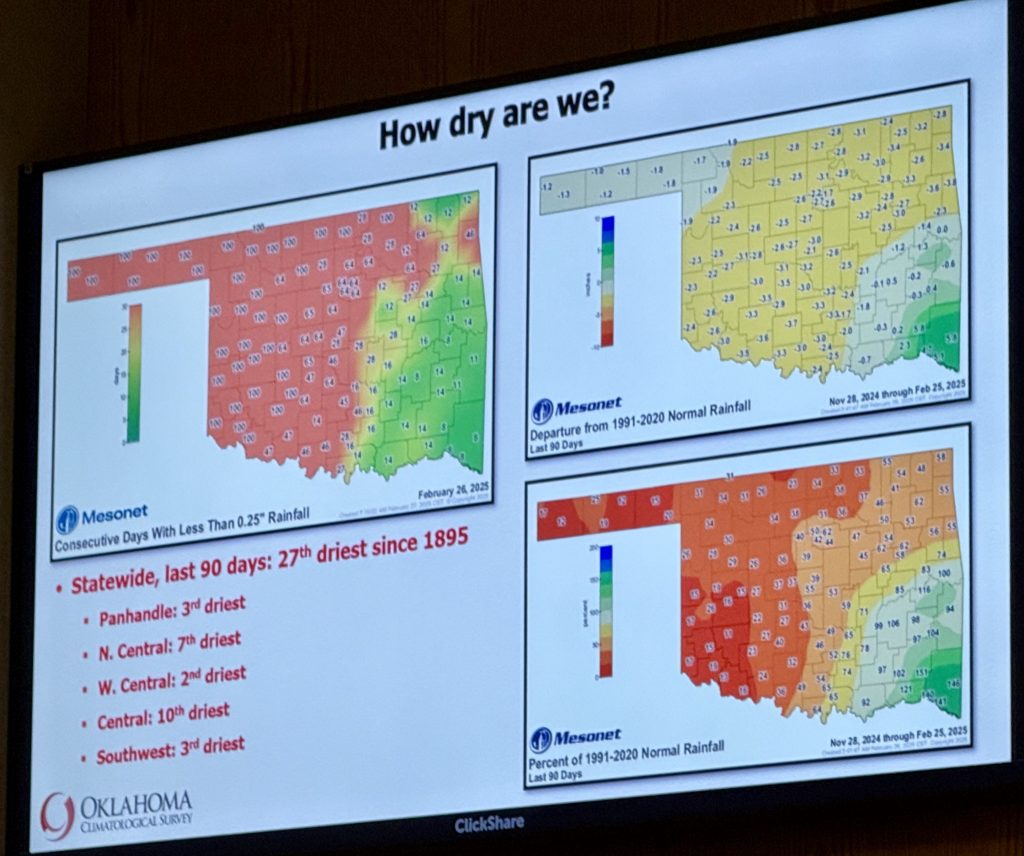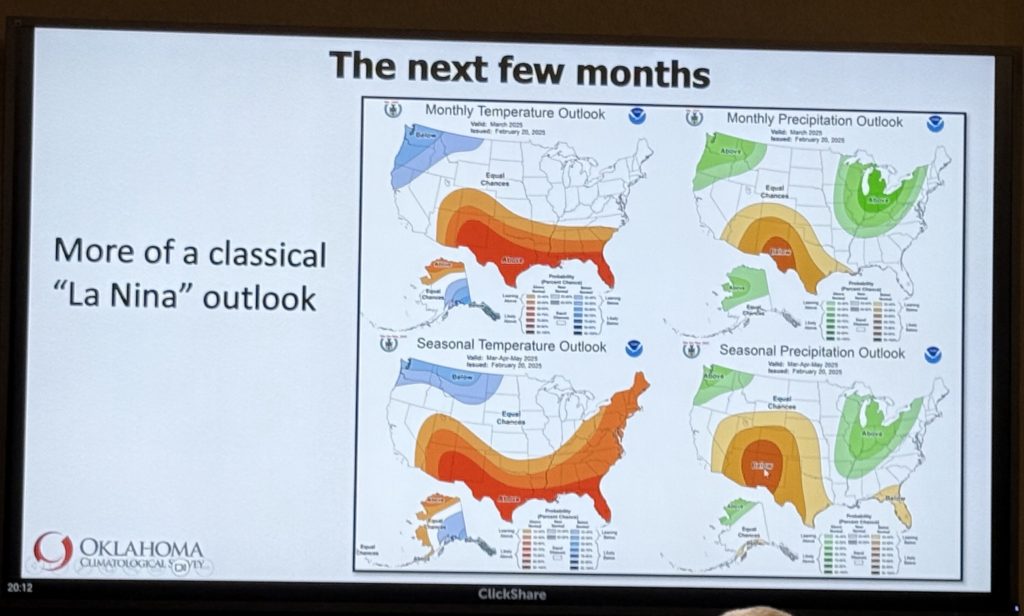
The Oklahoma Drought Commission met in Oklahoma City on Thursday, and Farm Director KC Sheperd caught up with state climatologist Gary McManus for an update on the drought conditions in Oklahoma.
According to McManus, things are looking dire for the western part of the state and into North Central Oklahoma, neither of which have received a quarter inch of rain in more than 100 days. It appears that the relief provided in early November has dried up.
“In just the last week, we have nearly tripled the amount of drought in Oklahoma,” McManus said. “It is still only eighteen percent, but that is a significant growth from what we had last week – about seven percent.”

Since August 2021, McManus has observed a series of flash droughts that have kept an ongoing drought status for the state despite occasional and unusually intense rainfall events.
Drought relief is paramount at this time as wheat farmers need to rejuvenate their fields, and livestock producers need their pastures to grow.
“I don’t know that there is a good time for drought, but there are a few periods in the year where it is not good, like when you are planting the wheat, and now, definitely in the spring, we need that moisture,” McManus stated. “Not only for [crops and pastures] but also to prevent the wildfire season from getting out of control.”
According to McManus, producers in Jefferson County say that things are worse than they seem. Their wheat never became viable enough to graze cattle, so they are supplementing more and selling more cattle.

While spring – the wettest time of the year for most of the state – is coming, the overall forecast is calling for warmer and drier conditions across the state, especially in the western half.
Rain is expected to fall early next week and through the middle of next week, providing a glimmer of hope; however, like many weather patterns in Oklahoma, the outlook is a double-edged sword.
“You know how that works. If we get one of those storm systems come through, that gives us a chance of rain in the springtime, but it will also come with fire danger ahead of that storm system,” McManus warned.
The heavy rains in early November are still evident in soil moisture measurements due to the cooler temperatures of winter, but McManus warned of drier conditions as temperatures warm and plants come out of dormancy.

He said that reservoirs in Southwest, North Central, and some in South Central Oklahoma still need a few feet of rain to return to close to normal levels.
The information in the weekly Drought Monitor Report comes largely from producers, and McManus expects to begin to hear more from them as springtime conditions develop.
“I use that information and provide it to the U.S. Drought Monitor National author who actually controls the depiction for the state,” McManus shared. “They can use that information accordingly to what my recommendations are.”
Producers can share conditions in their area with McManus by emailing him. The Oklahoma Mesonet website also has a link to provide information directly to the National Drought Monitor author.


















